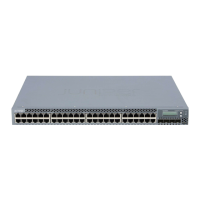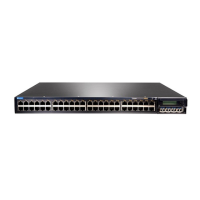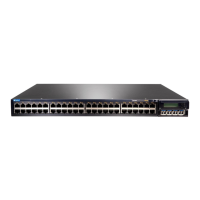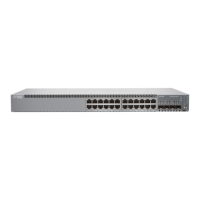NOTE: On EX3200, EX4200, and EX4300 switches, unicast RPF works
properly only if all switch interfaces—including aggregated Ethernet interfaces
(also referred to as link aggregation groups or LAGs), integrated routing and
bridging (IRB) interfaces, and routed VLAN interfaces (RVIs)—are
symmetrically routed, because unicast RPF is enabled globally on all switch
interfaces.
Related
Documentation
Verifying Unicast RPF Status on page 239•
• Understanding Unicast RPF on page 19
Diagnosing a Faulty Twisted-Pair Cable (CLI Procedure)
Problem Description: A 10/100/1000BASE-T Ethernet interface has connectivity problems that
you suspect might be caused by a faulty cable.
Solution Use the time domain reflectometry (TDR) test to determine whether a twisted-pair
Ethernet cable is faulty.
The TDR test:
• Detects and reports faults for each twisted pair in an Ethernet cable. Faults detected
include open circuits, short circuits, and impedance mismatches.
• Reports the distance to fault to within 1 meter.
• Detects and reports pair swaps, pair polarity reversals, and excessive pair skew.
The TDR test is supported on the following switches and interfaces:
• EX2200, EX3200, EX3300, and EX4200 switches—RJ-45 network interfaces. The TDR
test is not supported on management interfaces and SFP interfaces.
• EX6200 and EX8200 switches—RJ-45 network interfaces on line cards.
NOTE: We recommend running the TDR test on an interface when there is
no traffic on the interface.
To diagnose a cable problem by running the TDR test:
1. Run the request diagnostics tdr command.
user@switch> request diagnostics tdr start interface ge-0/0/10
Interface TDR detail:
Test status : Test successfully executed ge-0/0/10
2. View the results of the TDR test with the show diagnostics tdr command.
Copyright © 2015, Juniper Networks, Inc.332
Network Interfaces for EX4300 Switches
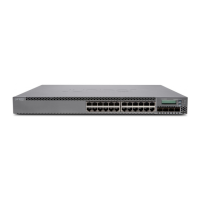
